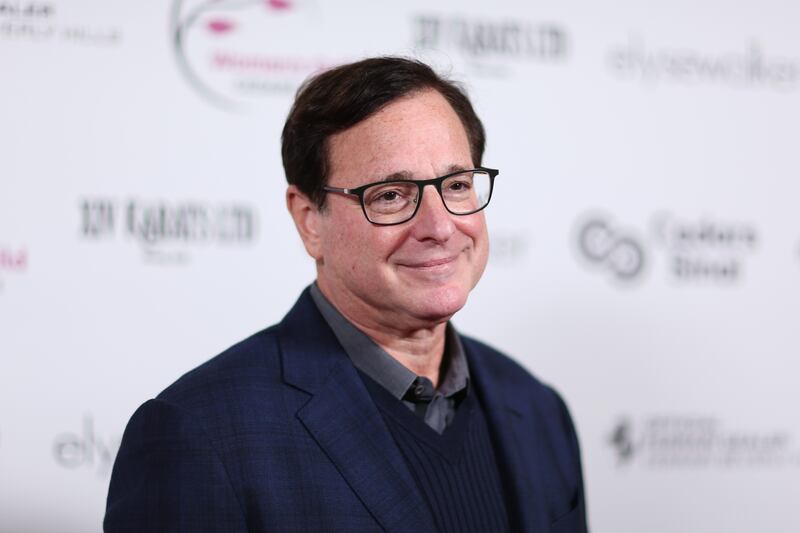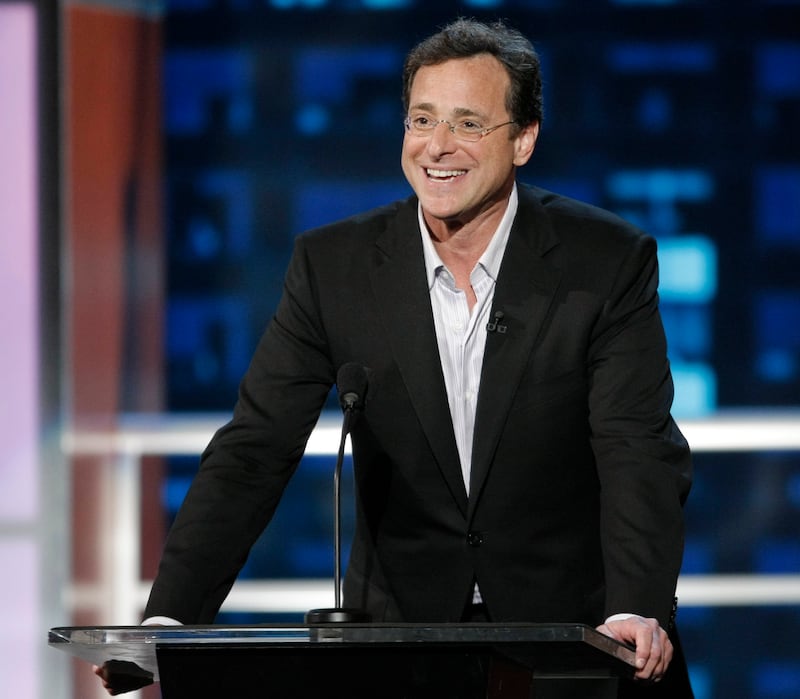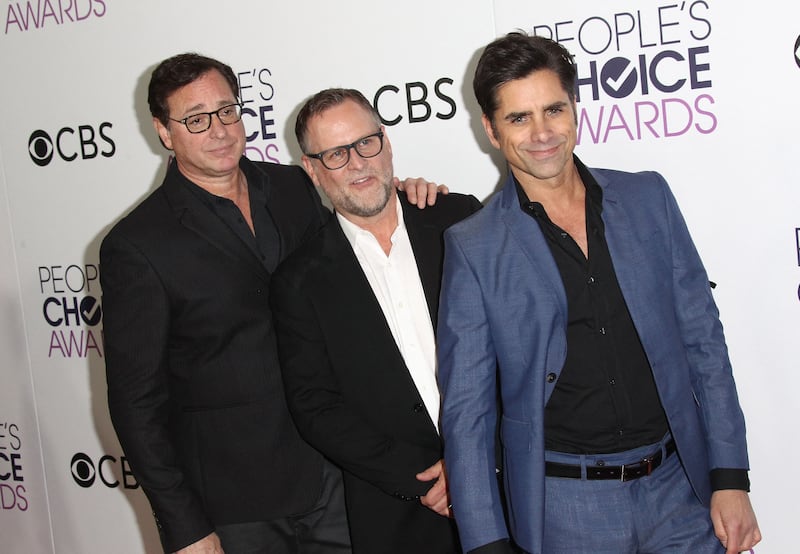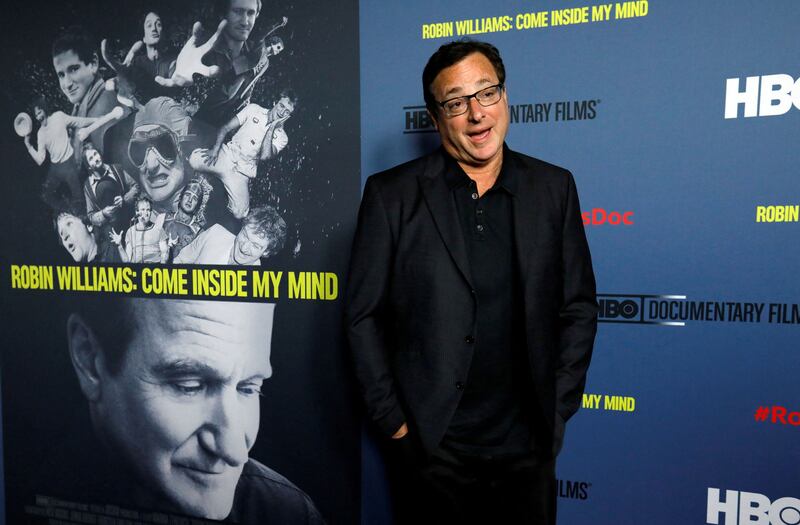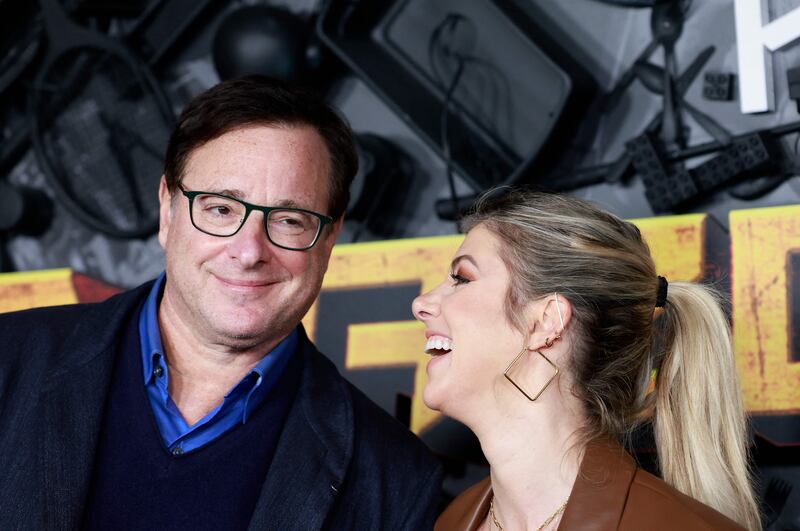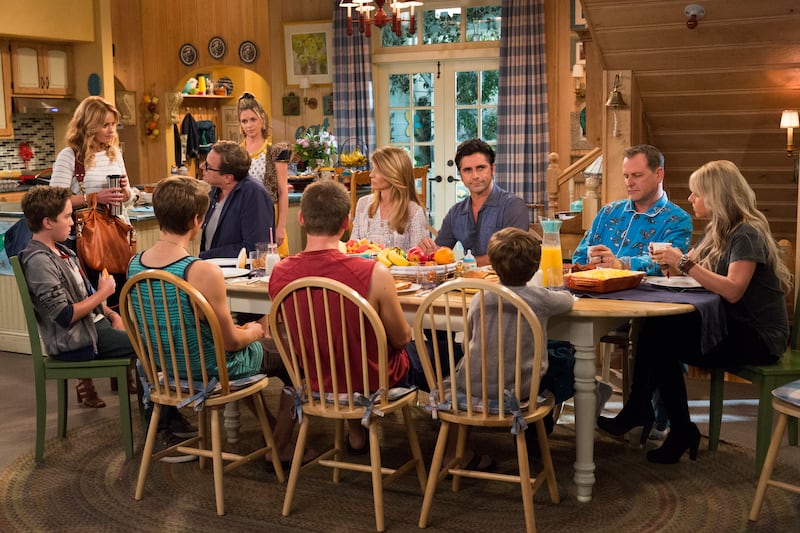When Jimmy Kimmel gave his opening monologue on Monday night’s Jimmy Kimmel Live! he offered a tribute to his friend, comedian, star of Full House and narrator of How I Met Your Mother, and host of America’s Funniest Home Videos, Bob Saget. Kimmel was just the latest in a long line of celebrities to show their love and respect to the star, who was found dead in his Florida hotel room on Sunday night aged 65.
We’d expect Saget’s TV co-stars to be on hand with a statement, and they were. Mary Kate and Ashley Olsen, who shared the role of his Full House daughter Michelle as infants, say: “Bob was the most loving, compassionate and generous man. We are deeply saddened that he is no longer with us but know that he will continue to be by our side to guide us as gracefully as he always has.”
Fellow Full House alumnus and General Hospital staple John Stamos, meanwhile, took to Twitter to say he was “broken” and “gutted” and, “I will never have another friend like him.” While Saget’s How I Met Your Mother co-star Neil Patrick Harris tweeted that he was “stunned".
The outpouring of grief wasn’t restricted to the stars of wholesome 1980s and 1990s sitcoms, however.
Hip hop royalty joined in when Questlove, frontman of ThoughtCo’s seventh greatest hip hop group of all time, The Roots, took to social media to describe Saget as “one of the nicest people ever". Hollywood giant Judd Apatow, producer of films such as Anchorman and The Big Sick describes the comedian as “a beautiful soul” and Tinseltown A-lister Jim Carey chims in to talk about Saget’s “big heart and warped comic mind".
So just what is it about Saget that seems to have touched so many far beyond the audience of a couple of moderately successful mainstream sitcoms and a comedy clip show?
First of all, it’s worth noting that Saget was first and foremost a stand-up comedian, and remained so throughout his successful TV acting career. He was on a stand-up tour at the time of his death, and had performed on stage in Ponte Vedra Beach, Florida the previous evening.
Saget’s stand-up, in contrast to his wholesome TV dad persona (both literally in Full House and figuratively thanks to his frequent and unapologetic use of “dad jokes” while hosting America’s Funniest Home Videos) was both dark and decidedly adult, giving him an appeal far beyond the viewers of family light entertainment. Saget partly blamed the dark nature of his humour on the fact he had almost died due to a gangrenous appendix as a young man. He told the Saturday Evening Post in 1990: "I was a cocky, overweight 22-year-old. Then I had a gangrenous appendix taken out, almost died, and I got over being cocky or overweight."
His dark side was further inflamed by the fact that his youth was almost defined by family deaths. He wrote in his 2014 autobiography, Dirty Daddy: The Chronicles of a Family Man Turned Filthy Comedian: “I’ve lost a lot of people, and throughout my childhood – almost every two years – someone in my family died at an unnaturally young age.”
Even when he grew older Saget was no stranger to family tragedy, he lost his two sisters Andrea and Gay to an aneurysm and scleroderma, in 1985 and 1994, respectively. He would become a dedicated campaigner for scleroderma, a rare condition that causes hardening of the skin and internal organs, and joined the board of the Scleroderma Research Foundation in 2003.
As for the adult side to his humour – Saget’s sets were often bawdy and full of the sort of topics that have no place in a family newspaper – the comic put that down to what he called his “sick silliness".
Writing in Dirty Daddy, he explained: “I never do it to shock anyone, even though people have sometimes thought of me as a shock comic. It’s not something I’m proud of. But I’m not ashamed of it either. It’s more of a handicap. Or, depending on your perspective, a gift.”
Saget appealed to both fans of wholesome 80s and 90s sitcoms and edgy, grown-up stand-up comedy, but he also has an unexpected cultural significance to younger generations, too. When the comic took on hosting America’s Funniest Home Videos in 1989 it was in a pre-internet age, but the format is unmistakable to modern eyes.
Families would send in their amateur clips of people falling off bikes, cats sliding down drainpipes and bad wedding dancers falling off stages, and Saget would link the clips to a series of appalling jokes. In the modern media environment we’d probably call it “short-form, unscripted, comedic content” and watch it online, but there’s no denying that, even if unwittingly, Saget was a pioneer of the form.
Essentially, Saget invented YouTube on TV, 16 years before YouTube invented itself online.
Whether that’s a good thing or not is an entirely subjective question, but on that basis alone the unassuming comic is perhaps one of the most important cultural figures of our era. While Full House and How I Met Your Mother may fade into obscurity with the passage of time, cats doing cute things on YouTube could quite possibly live for eternity, and by extension Saget will remain timeless.
